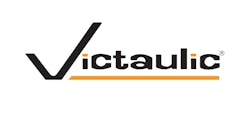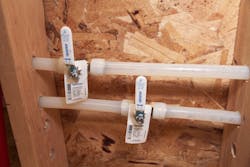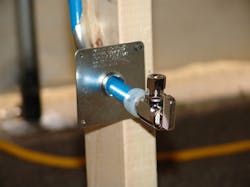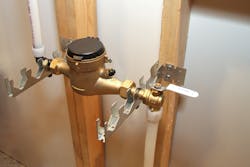Latest from Piping
Sponsored
By Kim Bliss
Not all valves are the same. For PEX piping systems, whether plumbing or hydronic heating and cooling, the type of valve you specify and install can actually impact system quality and performance.
Here are four essential points to consider before you choose a valve for your next PEX piping project.
Regulatory requirements
Building codes, manufacturing standards, and listings set regulations for piping systems and components to govern the manufacturing, installation, and inspection of products to protect human life, occupant health, and safety of the building.
That aside, they are also important to your bottom line. If you happen to install valves that don’t meet a certain code, standard, or listing required for your jurisdiction, you will be required to remove and replace them with the correct valves — at your cost.
Codes: For residential potable plumbing applications, the valves may need to meet some or potentially all of the following building codes: International Residential Code (IRC), International Plumbing Code (IPC), Uniform Plumbing Code (UPC) and National Standard Plumbing Code (NSPC).
For commercial potable plumbing applications, the valves may need to meet some or potentially all of the following building codes: International Building Code (IBC), International Plumbing Code (IPC), Uniform Plumbing Code (UPC), and National Standard Plumbing Code (NSPC).
For residential hydronic heating and cooling applications, the valves may need to meet the International Mechanical Code (IMC) and/or the Uniform Mechanical Code (UMC).
For commercial hydronic heating and cooling applications, the valves may need to meet the International Building Code (IBC), the International Mechanical Code (IMC), and/or the Uniform Mechanical Code (UMC).
Standards and listings: For residential and commercial potable plumbing applications, the valves may need to meet some or potentially all of following standards and listings: ASTM F877, ASTM F1960 (exclusively for cold-expansion fittings), NSF/ANSI 14, NSF/ANSI 61, NSF/ANSI 359, NSF/ANSI 372 and ASME A112.18.1.
For residential and commercial hydronic heating and cooling applications, the valves may need to meet some or potentially all of the following standards and listings: ASTM F877, ASTM F1960 (exclusively for cold-expansion fittings), NSF/ANSI 14 and NSF/ANSI 359.
Also, if you are installing PEX systems with ASTM F1960 expansion connections, ASTM F1960 includes a list of recognized forged brass alloys. It is important that you use valves manufactured using one of these certified alloys.
Some valve manufacturers state they are “tested” to ASTM F1960 or that they “conform” to ASTM F1960. However, that does not mean they are listed to ASTM F1960. Implying conformance by stating a valve is “tested” or “conforms to” ASTM F1960 is misleading.
It is vital you only install a valve that is listed to ASTM F1960 to ensure the best possible quality and performance for your PEX piping system with cold-expansion connections.
Tube stops
There are certain physical attributes on PEX piping system valves that are important to the performance of the valve itself, as well as the complete system performance. A positive tube stop is one of them. This design feature assists the installer to ensure the valve is inserted into the pipe far enough without overextending the pipe past a certain point.
Without these positive tube stops, the potential for leaks due to improper connections is present. By installing valves with positive tube stops, you have added confidence for more consistent installations with less chance for leaks and callbacks.
Stem features
You might think a valve stem is inconsequential to the overall quality of a system. However, valves that feature “blow-out proof” stems are obviously superior to ones that do not, and that is something to consider when choosing a valve for a PEX piping system. The saying “you get what you pay for” definitely resonates with this feature, and keeping dollars in your pocket and your reputation solid go hand-in-hand.
Another key feature you will want to have on your valves is a stem extension. Some manufacturers offer stem-extension kits that make it fast and easy to accommodate insulation around the piping system without crushing or compromising the quality of the insulation. These kits can often accommodate insulation thicknesses up to 2" to help your systems comply with local energy codes.
Manufacturer considerations
Lastly, it’s important to consider the manufacturer. Some newer valve manufacturers have recently entered the PEX piping market and are offering products at a lower cost. Be careful. The performance of these parts may not be verified, based on available certification or supporting data.
Go with a product that has a proven history of reliability and performance. This is important to your business and your reputation. Make sure you choose valves that are tested, listed, and meet all the required codes and standards for the PEX piping application you are installing.
For more information about PEX piping systems, visit the Plastics Pipe Institute at plasticpipe.org or the Plastic Pipe and Fittings Association at ppfahome.org.
Kim Bliss is the technical and marketing content manager at Uponor. She can be reached at [email protected].





